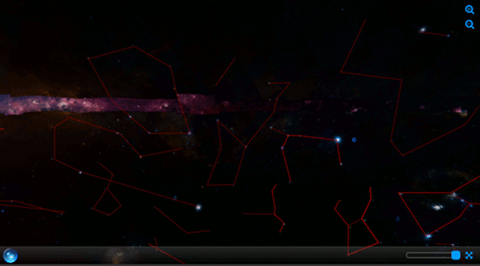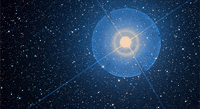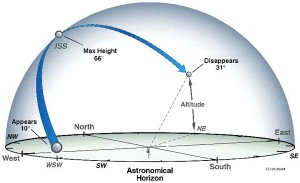For the student who asked how do we know about black holes if we can’t see them. From NASA. Based on the paper: http://www.nasa.gov/mission_pages/chandra/destroyed-star-rains-onto-black-hole-winds-blow-it-back.html
Tag: space
See the Galaxy

A wonderful 3d, rotate and zoom, viewer of our galaxy via NASA’s Spitzer Space telescope.

See the International Space Station
NASA’s Spot the Station website tells you when and where to look to see the space station.

What Happens When Two Black Holes Collide?
A student asked this question about black holes during a discussion, and I didn’t have a good answer. Now there’s this:
A study last year found unusually high levels of the isotope carbon-14 in ancient rings of Japanese cedar trees and a corresponding spike in beryllium-10 in Antarctic ice.
The readings were traced back to a point in AD 774 or 775, suggesting that during that period the Earth was hit by an intense burst of radiation, but researchers were initially unable to determine its cause.
Now a separate team of astronomers have suggested it could have been due to the collision of two compact stellar remnants such as black holes, neutron stars or white dwarfs.
— via The Weather Channel (2013): Black Hole Collision May Have Irradiated Earth in 8th Century.
From the original article:
While long [Gamma Ray Bursts (GRBs)] are caused by the core collapse of a very massive star, short GRBs are explained by the merger of two compact objects … [such as] a neutron star with either a black hole becoming a more massive black hole, or with another neutron star becoming either a relatively massive stable neutron star or otherwise a black hole.
— Hambaryan and Neuhäuser (2013): A Galactic short gamma-ray burst as cause for the 14C peak in AD 774/5 in
More info via The Telegraph, and the original article discussing the spike in carbon-14 in tree rings is here.
The Sounds of Space
Charged electromagnetic particles from the solar wind interact to create sound in space.
You can also listen at radio-astronomy.net.
A Planet Being Formed
In the early stages of the formation of a solar system, dust in the nebula around a young star is attracted to each other because of their minute gravitational attraction to each other.
In the video below, accumulation of dust and gas creates a planet, probably a gas giant, that clears a swath of the solar nebula.
Sending Invasive Species to Mars
George Dvorsky summarizes a new study showing six types of bacteria found in Siberia are able to survive, and even thrive, under Mars-like conditions.
The researchers took these cultures [from Siberian permafrost] and exposed them to similar conditions found on Mars, including a severe lack of oxygen, extreme cold temperatures, and very low pressure (about 150 times lower than the Earth’s, about 7 millibars). The experiment was run over the period of 30 days. Over 10,000 isolates were exposed to these conditions — and they all died.
Except six.
And in fact, these six surviving microbes actually did better under these conditions. Surprised by the result, the researchers took a closer look at the survivors, and following a genetic analysis concluded that they all came from the same genus: an extremely hardy extremophile called Carnobacterium.
— Dvorsky (2012): Scientists show that microbes from Earth can survive conditions found on Mars in io9.
So now we have to wonder if we’ve already, inadvertently, sent life to Mars.
Sound in Space
Ambient noise from inside the space station.
See also the sound of rocks banging on your spacecraft.